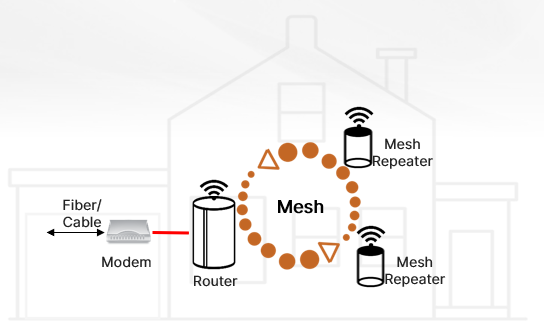Wi-Fi and 5G: dancing in tandem to the high-speed tune
5G and Wi-Fi are commonly used in everyday life for high-speed data access, but many people are unsure of what they mean and how they relate to each other. In this article Anubhava Jain, Senior Manager, Product Marketing, Wireless, Connectivity and Signal Processing Division, onsemi, provides an overview of each technology, reviews their differences and similarities, discusses when and where they should be used and presents some future technology trends.
What is Wi-Fi and how does it work?
Wi-Fi is type of wireless communications technology with a limited range (approximately 50m indoors) that makes it suitable to provide a local area network (LAN) in home and office environments. It carries data at speeds up to several gigahertz and uses a part of the electromagnetic spectrum, which is unlicensed – 2.4GHz and 5GHz signals.
The way in which Wi-Fi works is defined by the IEEE 802.11 standard and this has evolved through several generations. The most recent update to the standard is called 802.11ax which describes Wi-Fi 6. This supports a peak raw data rate up to 9.6Gbps by employing 1024-QAM (Quadrature Amplitude Modulation), 160MHz bandwidth and multi-user multiple-input, multiple-output (MU-MIMO) with eight spatial streams.
The US Federal Communications Commission (FCC) has defined the U-NII (Unlicensed National Information Infrastructure) frequency bands ranging from 5.150GHz to 7.125GHz to be used for Wi-Fi. An extended version of Wi-Fi 6 called Wi-Fi 6E uses an additional 1200MHz of frequency bands (up towards 7GHz). This will provide the faster speeds and lower latency required for AR/VR gaming, 8K streaming, smart cities, and other applications. These signals will be more immune to interference from other wireless technologies like Bluetooth, Bluetooth Low Energy (LE) and Zigbee. onsemi’s QCS-AX2 chipset can be used to implement a high-performing and efficient Wi-Fi 6E solution.

Wi-Fi Mesh improves coverage
Apart from having limited range, Wi-Fi signals are also blocked by some building materials meaning ‘dead spots’ (where signal coverage is poor) are a problem. The Wi-Fi mesh topology uses a series of Wi-Fi extenders (repeaters) to provide better indoor signal coverage. These work in combination to boost signal coverage in areas which the main router signal cannot reach.

Current and future trends for Wi-Fi
Market analysts forecast that more than 13 billion Wi-Fi 6 enabled devices will be shipped between 2020 and 2026 and that up to 628 million public Wi-Fi hotspots will be installed by 2023. Wi-Fi has played a vital role in making it possible for employees to work from home during the current pandemic and is a key enable of the internet-of-things (IoT). Wi-Fi 7, also known as Wi-Fi EHT (Extremely High Throughput) will the next generation of this technology and is based on the IEEE 802.11be protocol. This will use 320MHz bandwidth and 4096 QAM.
What is 5G?
5G is the fifth generation of wireless telecommunications and provides similar data transmission speeds to Wi-Fi (Gigabits per second). The only limit on the range of 5G is the ability of telecommunication companies to provide signal coverage. Since it is a relatively new technology, operators are still rolling out their 5G infrastructure and it will be some time before these signals are available to all mobile users. A key operational difference with Wi-Fi is that 5G uses licensed spectrum that ranges from the sub-6 GHz region up close to 25GHz. 5G provides a type of wide area network (WAN) which has low latency, high throughput, and massive capacity.
Co-operative technologies
Since both technologies provide the same benefits of high speed and low latency to provide a high-quality user experience, the question arises when and where they should be used? The low cost of setting up a home Wi-Fi network (router) makes it suitable for the data needs of multiple devices like laptops, tablets, TV, and IoT devices that are stationary. Another advantage of Wi-Fi networks is that they are easier to secure because they are privately owned, whereas the security of 5G networks is the responsibility of the provider.
5G provides a ‘Wi-Fi type experience’ for on-the-go smartphone, laptop and tablets users that require uninterrupted connectivity. Its wide geographic coverage means it can provide the wireless infrastructure required by smart cities, connected automobiles and industrial IoT. The blocking effects of building materials cause 5G signals to be weaker indoors, in which case it makes sense for devices with dual transceivers to switch to Wi-Fi.
Summary
Both Wi-Fi and 5G offer a similar user experience – high speed, low latency data transmission with massive user capacity. Wi-Fi is best suited for indoor environments while 5G is more suitable for mobile and the outdoor applications. They can be used seamlessly to provide efficient data connectivity in different scenarios.


